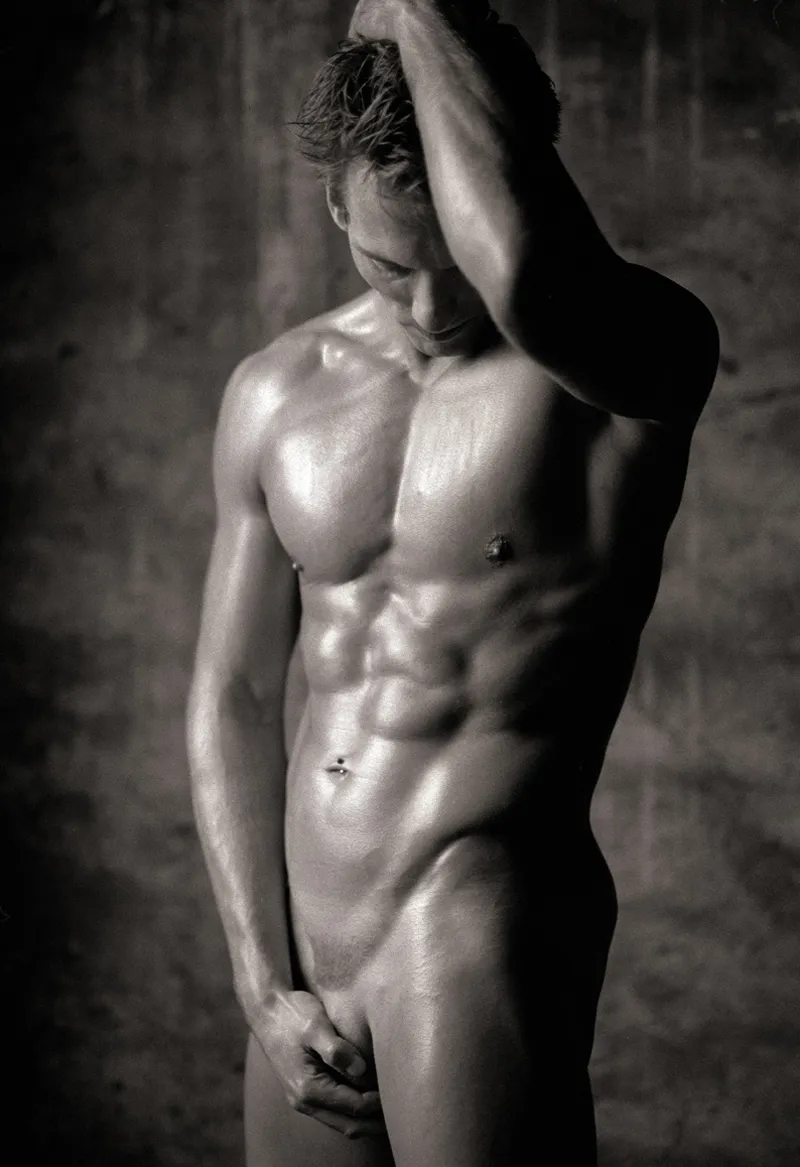Positioning and objectives
When I set up my own business as a freelance advertising photographer in 1998, I wanted to focus on photographing beauty portraits, fashion and eroticism. And all of them in black and white. I now mainly photograph in color, and generally people, but also products, cars and interiors. I've even done a lot of architectural photography.
I also write photography textbooks and am available as a speaker for workshops and seminars. However, despite my diversification, my initial focus has remained the same: I still mainly photograph beauty portraits and erotica. I have also been organizing workshops abroad for several years now.
The following collage shows the making of my Andalusia workshop (topic: beauty portraits and eroticism) from October 2010.
All-rounder or specialist?
Which is the right path to success? In order to have a goal and to be noticed by customers, you have to position yourself in the market somehow. Even if your focus will probably shift in the course of your self-employment, you should define your photographic status precisely in order to make a targeted start.
If you cover many areas within photography, i.e. your range of services is very broad, the number of companies that could potentially be potential customers for you will be correspondingly large. At first glance, this seems to be the most promising strategy for securing the largest possible customer base.
The disadvantage of this approach is that you will find it difficult to attract attention. People - and therefore also your potential customers - think in pigeonholes. Therefore, someone who stands for a certain area of photography is more likely to be noticed than someone who offers everything.
From the very beginning, I chose erotic photography of women as the focus of my work. When I first photographed male nudes for a photography textbook, I wanted to offer them to a calendar publisher for publication. But the only comment I got was that I was a women's photographer and therefore they couldn't publish a men's calendar with me ...
So I had successfully established myself on the market - as a women's photographer - with the disadvantage, however, that other specialists were often sought for other areas.
Fields of activity
There are many different fields of activity in photography. Which one do you want to focus on?
There are countless areas in photography. Here is a list of the most common ones (in alphabetical order):
- Nude and erotic photography
- Architectural photography
- Tabloid journalism (paparazzi)
- Family photography/child photography/baby photography
- food photography
- Wedding photography
- Industrial photography
- Concert and theater photography
- Artistic photography
- Fashion photography
- Nature and landscape photography
- Portrait photography/people photography
- Travel photography
- Reportage photography/documentary photography
- Sports photography
- Still photography/product photography
- Stock photography (images are marketed via picture agencies)
- Animal photography
- Underwater photography
- Scientific photography
This list could be continued almost indefinitely, as further specializations and niches within the various areas of photography are conceivable. For example, astrophotography could be included as a sub-section of nature photography, or photographic war reporting as a sub-section of reportage photography.
The inclusion of artistic photography, understood here as an end in itself, does not mean that the other areas of photography cannot also be artistically motivated and meet the highest artistic standards. On the contrary! The same applies to the field of stock photography, as this term merely describes how the photos, which can come thematically from all other areas, are marketed. Nevertheless, stock photography is such an important area of business that it should be discussed separately.
In the meantime, I have already worked in the areas of nude/erotic photography, artistic photography, portrait/people photography, children and baby photography, wedding photography, architectural photography, still photography, food photography, fashion photography and concert photography. I have even taken travel photos as an application for my workshops abroad in Ibiza and Andalusia.
The curse and blessing of the photo agency business
Picture agencies (e.g. Corbis, Getty, Fotolia, iStockphoto, Mauritius, Fotosearch, Shutterstock, f1-online and many more) receive photos from their partner photographers at regular or irregular intervals, which are then marketed by the agency. The photographer therefore has no influence on how and under what conditions his photos are distributed. On the other hand, they do not have to deal with customer acquisition, the granting of rights, invoicing, monitoring and dunning. Stock photography, as this cooperation with photo agencies is called, is therefore ideal for photographers who want to concentrate purely on photography and want to minimize the amount of "office work" and other administrative work that automatically arises when you are also busy marketing your photographs.
In the past, the photo agency business was a good source of extra income for freelance photographers who could market their freelance work, which they photographed in the days between their commissioned photo shoots. Nowadays, it is mainly run by photographers who have specialized in photographing photo agency material.
This type of photography also offers a great deal of freedom, as each photographer is required to create suitable photo material themselves and supply it to the photo agency.
As a result, there is no direct customer contact, and direct contact with the photo agency's employees is limited to the few exceptions when the agency commissions and accompanies the shoot. However, this is only the case in exceptional cases with promising themes, then realized by the agency's top photographers.
A photo that could be marketed well via a photo agency:
It could be used for the themes: "boy" - "child" - "climbing" - "climbing forest" - "protection" - "leisure" - "movement" - "safety helmet" - "nature" - "high ropes course" - "adventure" - "tree to tree" - "courage" - "test of courage" - "excitement" - "thrill" - "self-confidence" - "fun" - "overcoming your inner bastard" ...
As a photographer, you have a kind of framework contract with the photo agency that applies equally to all the photographs you supply (including future deliveries). This contract also regulates the fee rate. This varies depending on the (variable) status of the photographer in the agency and ranges from 20% for newcomers to 60% for top photographers.
The contract also includes the modalities of delivery (usually an upload to the photo agency server), the release of the agency from third-party rights, the billing method and the requirements for the delivered photographs (e.g. required minimum resolution, file format, output size, maximum ISO sensitivity setting, etc.).
If the photos do not meet the requirements, they will not be included in the pool of photos offered to customers for selection. If several very similar photos are uploaded, only one from the series will be accepted. Here, too, it is important to keep the database clear despite the large number of photos on offer. A quality check of the image content is usually not carried out during the upload, as this cannot be automated.
As many photo agencies charge an upload fee for each uploaded photo (the amount varies depending on the agency and the photographer's ranking; several dozen euros are not uncommon), you should only upload your best photos and only a few variations from a photo shoot.
Model and location release must be uploaded together with the photo, provided that people are clearly recognizable in the photos and they are not "absolute persons of contemporary history" or photos were taken indoors in buildings.
Once the photos have been uploaded to the server, they are usually tagged by the photographer. This means that the photos are assigned specific topics and concise terms that match the content of the image. These search criteria then make it easier for the photo agency's customers to search for specific requirements.
This procedure is extremely important so that customers can find suitable photographs in the huge database in the shortest possible time. In some agencies, keywording is therefore still carried out by the appropriately qualified employees themselves. In others, the keywording carried out by the photographers is checked (at least randomly) by their own employees.
For example, the keywords for the following photo could be: "marina" - "sea" - "water" - "luxury" - "vacation" - "yacht" - "lifestyle" - "motorboat" ...
The most common photo motifs for picture agencies are still people, photographed in all kinds of situations. The keywords for this photo could be: "child" - "boy" - "diet" - "bad diet" - "French fries" - "ketchup" - "emotions" - "taste" ...
Newsletters are sent to photographers at irregular intervals in order to keep them up to date on what kind of motifs are in demand from the photo agency's customers. In this way, the image creators are also informed about the photo trends among image buyers.
The photographer receives a pro rata fee for the sale of his photographs via the picture agencies and any partner agencies from abroad. Depending on the agency, invoicing is sometimes monthly, sometimes quarterly. In the best case, his pro rata fee (photo author's share) is 50-60% of the net sales revenue, in other cases, especially for newcomers to the photo agency, it can be significantly less.
The photo agency business has led to a drop in the price of photos. On the one hand, because competition between photo agencies has led to a drop in prices. Secondly, because fewer and fewer photos are being commissioned because almost everything can already be bought somewhere as a stock photo.
The disadvantages of working with photo agencies are:
- The author, i.e. the photographer, is often not named in the publication, only the photo agency.
- As a photographer, you will only exceptionally be told where and in what context the photos were published as part of the billing process.
- Voucher copies are not sent to photographers, or only very rarely.
- Not all photo agencies provide information on which photo generated how much fee. With some agencies, only the total fee amount for all image sales of the individual photographer is stated on the invoices.
- Due to the enormous competition in the picture market between the global picture agencies, the prices for a single publication have fallen sharply.
- If one of your photos is sold via a partner agency of your picture agency which is located abroad, the fee is calculated on a pro rata basis of what the picture agency with which you are under contract receives from the foreign partner agency for this sale. If the sale is then not made via the foreign partner agency, but via its foreign partner agency from another country, the proportionate photographer's fee is reduced once again. This means that the share of the fee to which you are contractually entitled can dwindle quite considerably. This can result in very small amounts of less than 5 euros as a photographer's fee for a single image sold, which is of course annoying for the photographers because the publication is the same and you would receive much more if it had been done directly by the photo agency with which you are under contract.
- With microstock providers, it can happen that competing companies use the same photo for their advertising.
- In the struggle for survival, some agencies have developed so-called "subscription models", which have led to high-quality image material being sold off. The photographers then receive seemingly ridiculously low fees.
In the area of royalty-free photos, it can happen that insurance company V acquires a photo that it uses for a large advertising campaign for a new insurance benefit, and then it turns out that the competition, insurance company W, has also acquired the same photo and is also using it to advertise a new insurance benefit.


